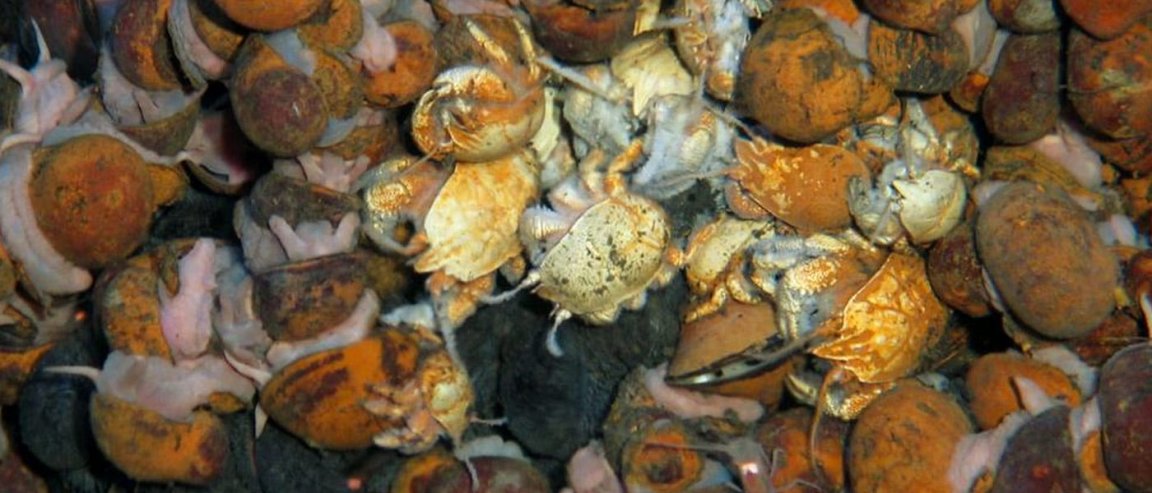
Unique New Species
An undersea expedition in November 2011 to study deep sea hydrothermal vents revealed previously unrecorded species of unique marine life. The team behind the discoveries is composed of scientists from the University of Southampton, together with colleagues from the Natural History Museum in London and Newcastle University. The results of their study is published in the journal Scientific Reports.
The hydrothermal vents, undersea hot springs about 2.8 km (1.7 miles) deep, are located in an area called Longqi (Dragon’s Breath). It’s an undersea region spanning an area the size of a football stadium located in the southwest Indian Ocean and about 2,000 km (1243 miles) southeast of Madagascar. These Longqi vents are the first of their kind known in the region.
The team found more than a dozen mineral spires or “vent chimneys.” Rising about 2 stories high from the seabed, these vents sustained a veritable ecosystem of living creatures surviving from the hot fluids gushing out of these rocks — and are rich in copper and gold. The team analyzed the vents using a deep-diving remotely operated vehicle (ROV).

Deep Sea Exploration
The research team, led by Jon Copley, was the first to actually study the Longqi vents and the marine life attached to them. After genetic comparisons with other species in different locations were done, the team identified six new species known only to Longqi: a hairy-chested species of ‘Hoff’ crab, two snail species, a species of limpet, a scaleworm species, and another species of deep-sea worm. Most of these are yet to be formally described, except for one snail species, given the scientific name Gigantopelta aegis.
“We can be certain that the new species we’ve found also live elsewhere in the southwest Indian Ocean, as they will have migrated here from other sites, but at the moment no-one really knows where, or how well-connected their populations are with those at Longqi,” Copley explained. “Our results highlight the need to explore other hydrothermal vents in the southwest Indian Ocean and investigate the connectivity of their populations, before any impacts from mineral exploration activities and future deep-sea mining can be assessed.”
These discoveries show us that space isn’t the only frontier that still needs exploring. We have much to learn about our planet’s own mysterious space, the oceans that comprise about 96.5% of the Earth’s waters.